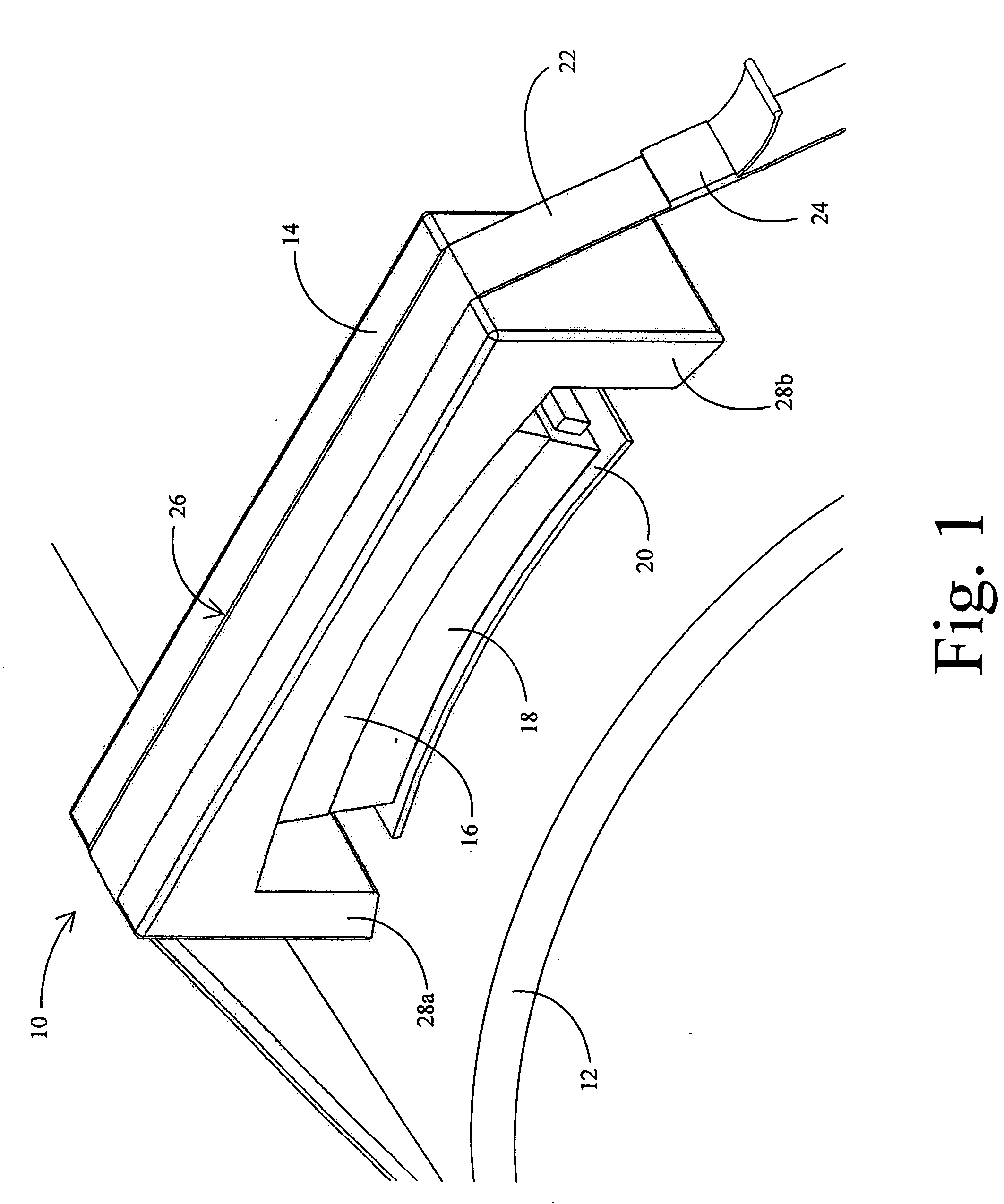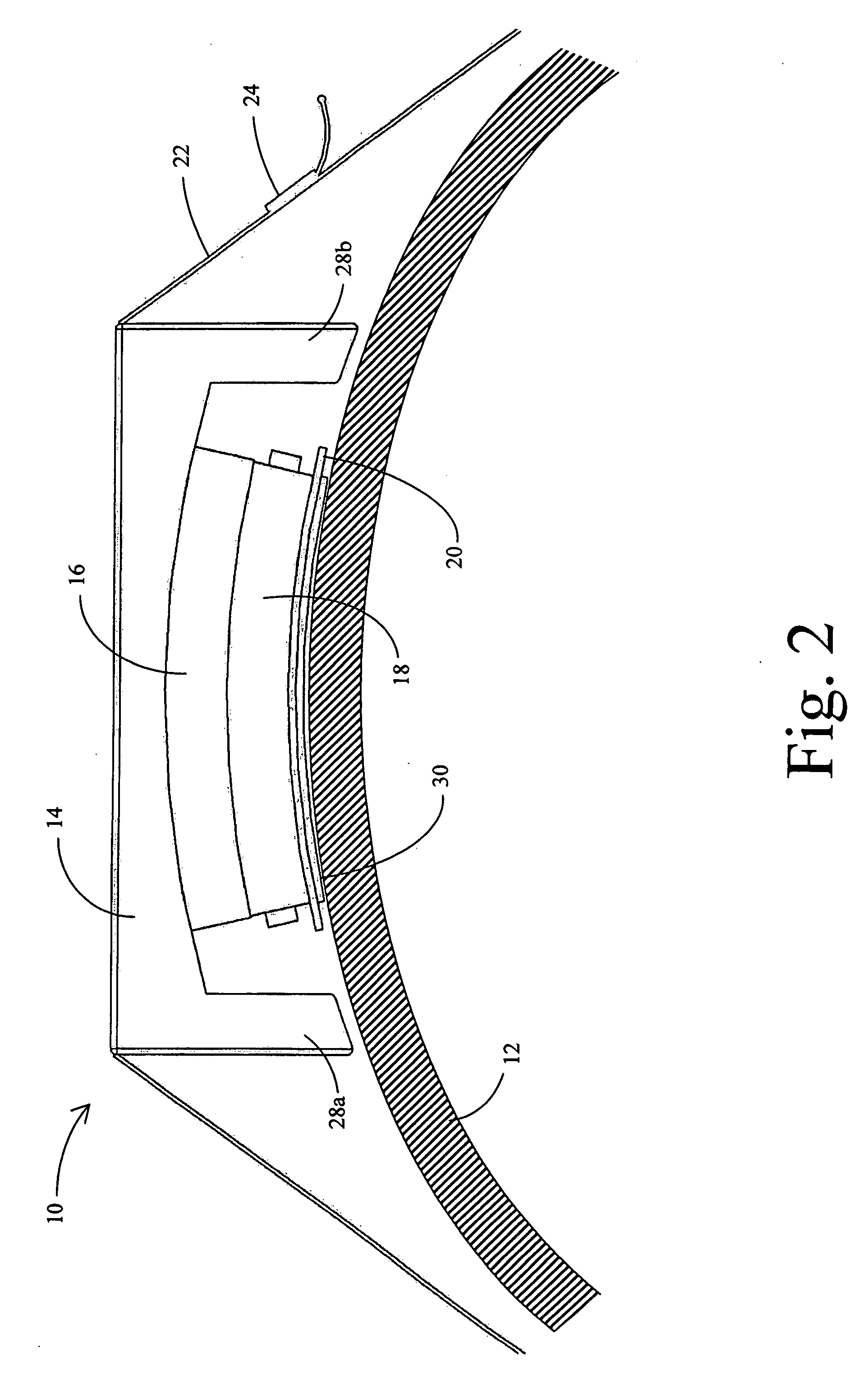Method and device for long-range torsional guided-wave inspection of piping with a partial excitation and detection around the pipe circumference
- Summary
- Abstract
- Description
- Claims
- Application Information
AI Technical Summary
Benefits of technology
Problems solved by technology
Method used
Image
Examples
Embodiment Construction
[0030]Reference is made first to FIG. 1 for a brief description of the overall plate magnetostrictive sensor (MsS) assembly of the present invention positioned as it would normally be placed in conjunction with the external curved surface of a cylindrical pipe or tube. Plate magnetostrictive sensor (MsS) assembly 10 is positioned on the external surface of pipe 12 and encompasses a radial portion of the entire circumference of the pipe. Assembly 10 is primarily comprised of a inverted U-shaped frame 14 held in place by belt 22 that encircles the pipe 12. Belt 22 is tensioned by buckle tensioning device 24 in a manner that secures the sensor assembly firmly against the external surface of the pipe. Belt 22 is maintained on frame 14 within belt slot 26 which is a channel depression that prevents belt 22 from slipping off of frame 14 while under tension or while the sensor assembly is being positioned into place.
[0031]A plate magnetostrictive sensor probe 18 is positioned on top of pad...
PUM
 Login to View More
Login to View More Abstract
Description
Claims
Application Information
 Login to View More
Login to View More - R&D
- Intellectual Property
- Life Sciences
- Materials
- Tech Scout
- Unparalleled Data Quality
- Higher Quality Content
- 60% Fewer Hallucinations
Browse by: Latest US Patents, China's latest patents, Technical Efficacy Thesaurus, Application Domain, Technology Topic, Popular Technical Reports.
© 2025 PatSnap. All rights reserved.Legal|Privacy policy|Modern Slavery Act Transparency Statement|Sitemap|About US| Contact US: help@patsnap.com



